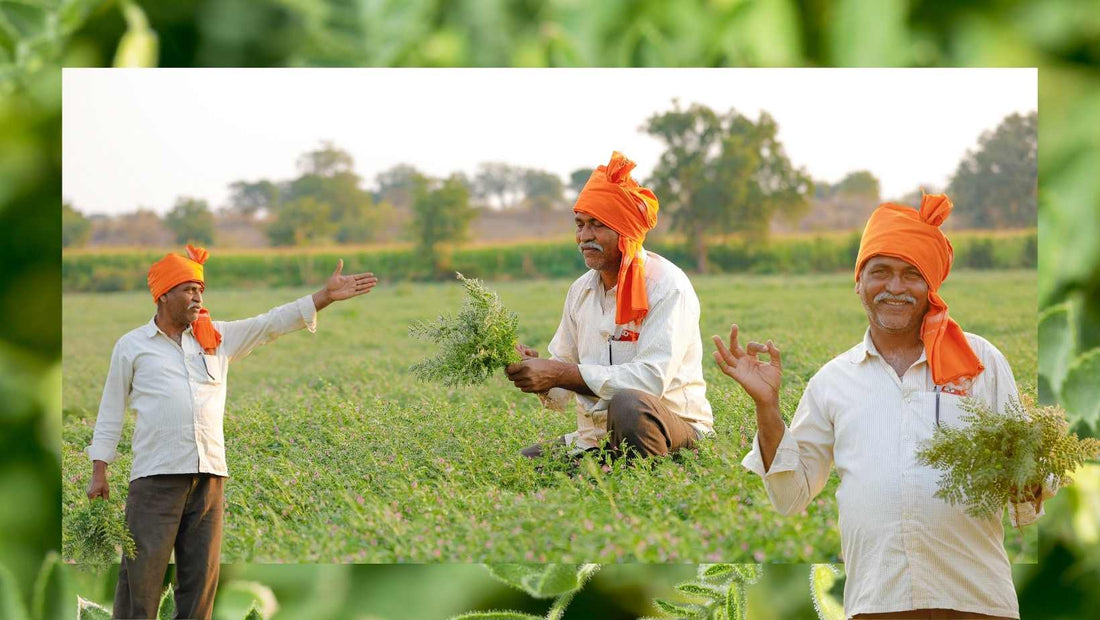
Empowering Indian Farmers: Maximizing Chickpea Yields, Minimizing Costs, and Adding Value
Share
Chickpeas, also known as garbanzo beans, can be a fantastic opportunity for everyday Indian farmers. They're versatile, packed with nutrients, and well-loved by people worldwide. Here's why they make sense for Indian farmers:
-
Nutrient-Rich Crop: Chickpeas are a great source of protein, fiber, vitamins, and minerals, making them popular among consumers everywhere.
-
Easy to Cultivate: They're relatively hassle-free to grow, requiring moderate amounts of water and fertilizer, and they're less susceptible to pests and diseases.
-
Adaptable to Various Climates: Chickpeas can thrive in different climates across India, ensuring that farmers all over the country can explore this crop.
-
High Demand: There's a strong domestic market for chickpeas in India, given that it's both the world's largest producer and consumer of chickpeas. Additionally, exports from India have been on the rise.
Now, let's see how Indian farmers can enhance their chickpea yields while maintaining affordability and adding value to their produce:
To Increase Yields:
-
Select the Right Chickpea Variety: Choose a variety that suits your local climate and growing conditions.
-
Soil Preparation: Optimal growth occurs in well-drained, sandy loam soils with a slightly acidic pH.
-
Quality Seeds: Use certified seeds to ensure higher yields.
-
Sowing Timing: Chickpeas are a rabi crop and should be sown from October to November, but timing may vary by region.
-
Manage Resources Efficiently: Apply fertilizers and irrigation judiciously to prevent overuse.
-
Pest and Disease Control: Regularly monitor your crop for potential threats and take action promptly to protect your yield.
To Minimize Expenses:
-
Embrace Organic Practices: Employ organic inputs like compost and manure to enhance soil fertility and reduce the need for chemical fertilizers.
-
Efficient Irrigation Methods: Drip and sprinkler irrigation systems save water and fertilizer costs compared to flood irrigation.
-
Reduce Tillage: Adopt reduced tillage practices to enhance soil health and reduce fuel expenses.
-
Intercropping: Experiment with intercropping to increase yields while minimizing costs.
To Add Value to Your Product:
-
Processing: Chickpeas can be transformed into various products like chickpea flour, split chickpeas, and snacks, which can boost their appeal to consumers.
-
Branding: Create your own brand or collaborate with a marketing company to distinguish your product in the market.
-
Direct Marketing: Sell your chickpeas directly to consumers through online platforms, farmers' markets, and other direct channels to bypass middlemen and increase profits.
Additional Strategies:
-
Biofertilizers and Biostimulants: These natural products can improve plant growth and yield while remaining cost-effective.
-
Precision Agriculture: Use technology to optimize the use of resources like water, fertilizer, and pesticides, ultimately enhancing yields and reducing expenses.
-
Contract Farming: Establish agreements with buyers to sell your produce at a predetermined price, reducing risks and ensuring a steady income.
-
Value-Added Products: Process chickpeas into value-added products to increase your profits.
-
Direct Marketing: Sell your chickpeas directly to consumers through online platforms, farmers markets, and other direct channels to increase your profits.
By following these guidelines, Indian farmers can enhance chickpea yields, keep costs manageable, and add value to their products. This can lead to improved livelihoods and a more sustainable chickpea industry.










